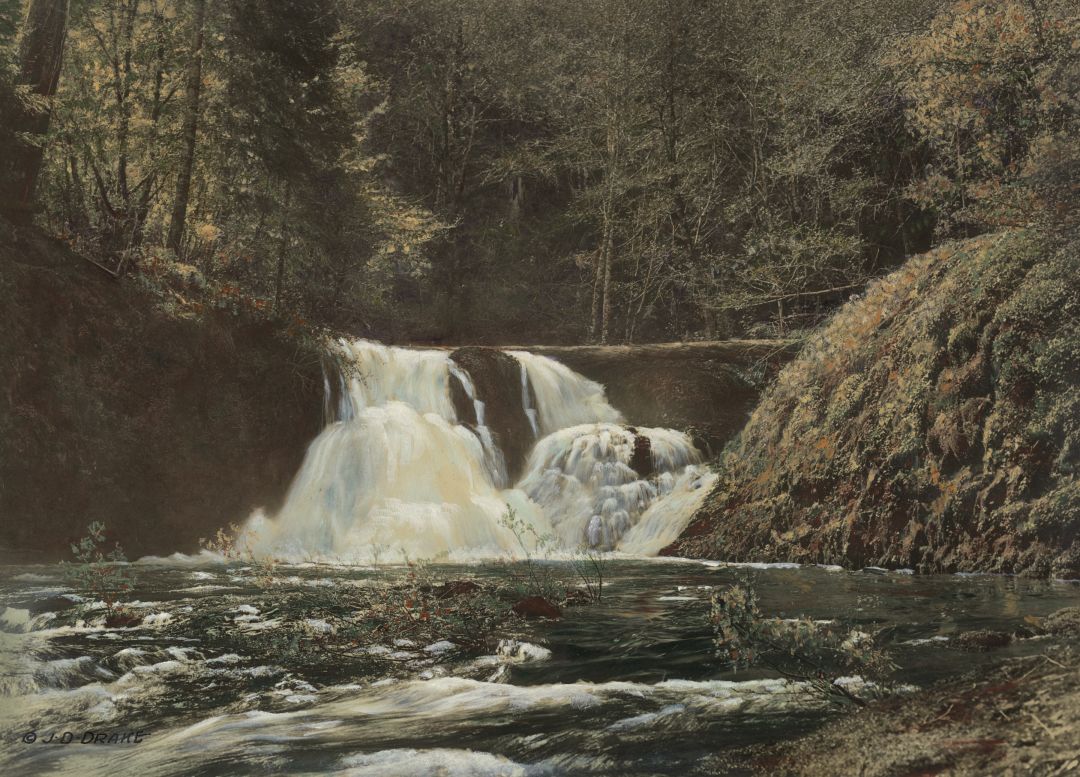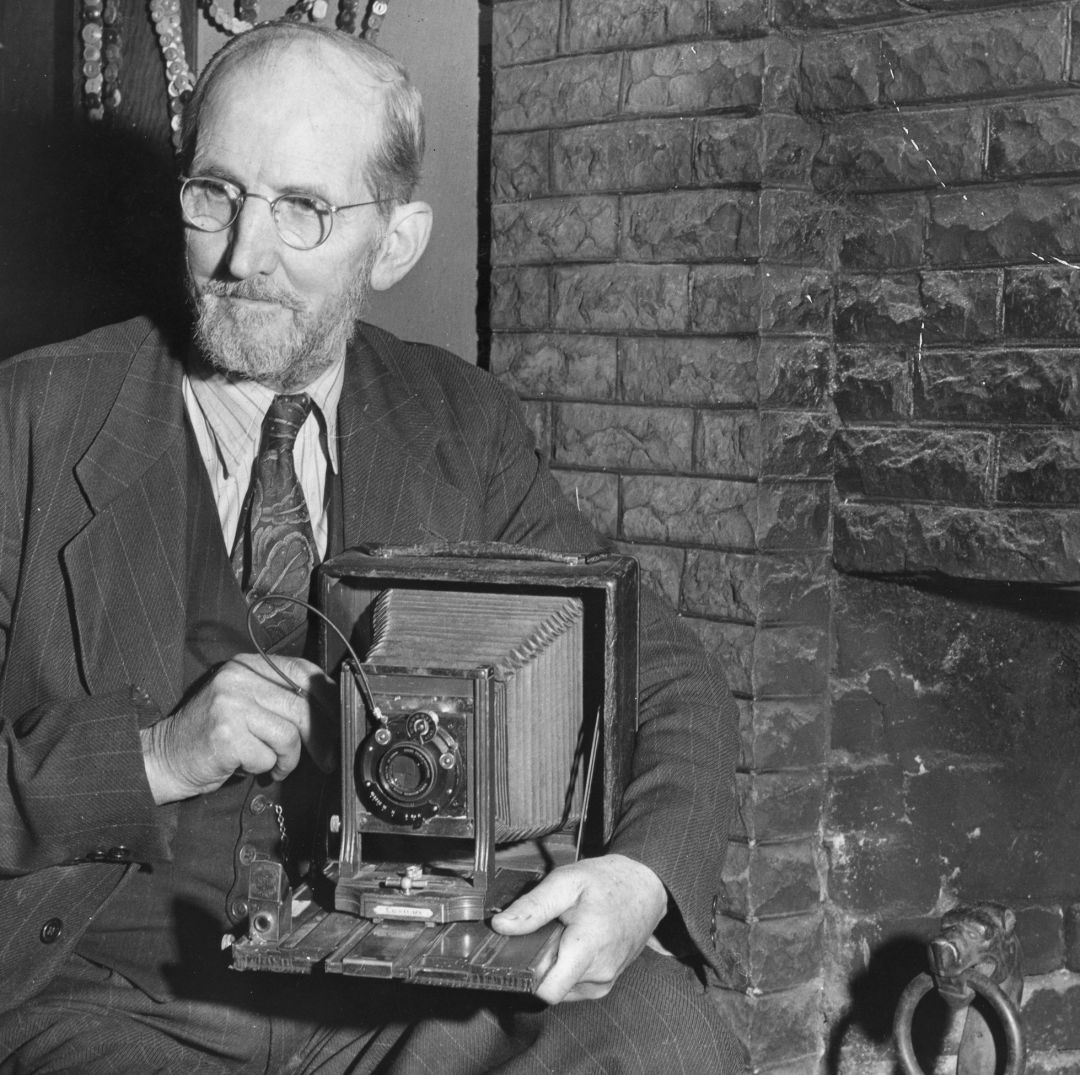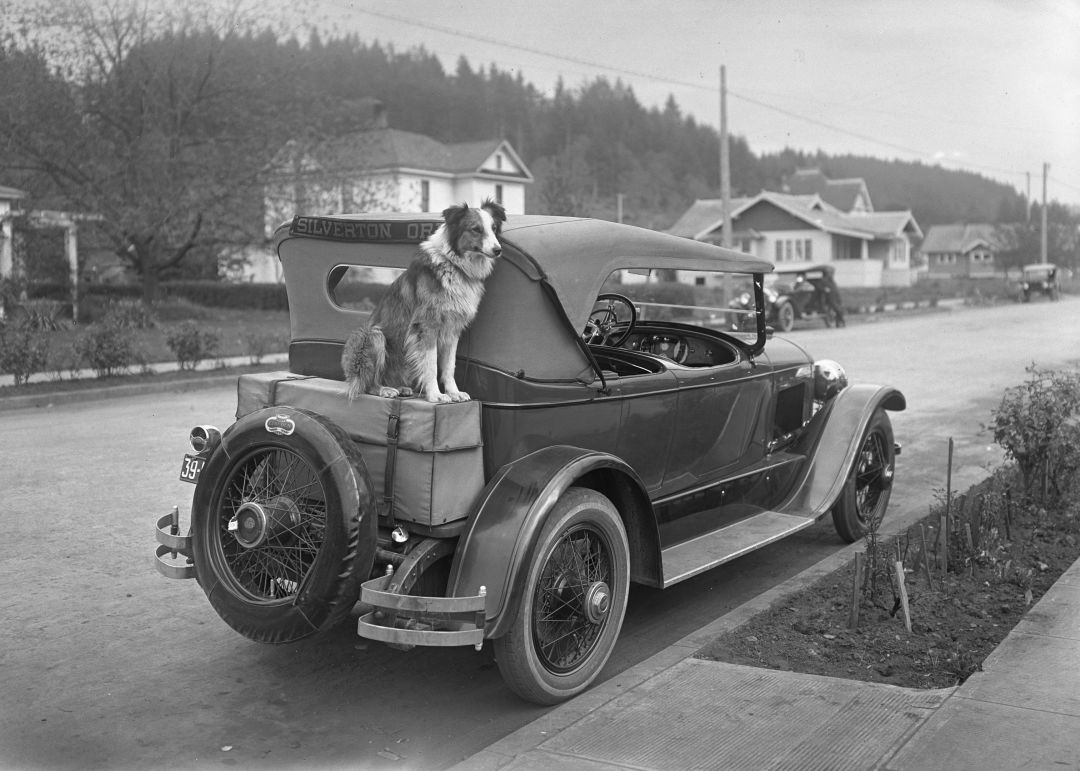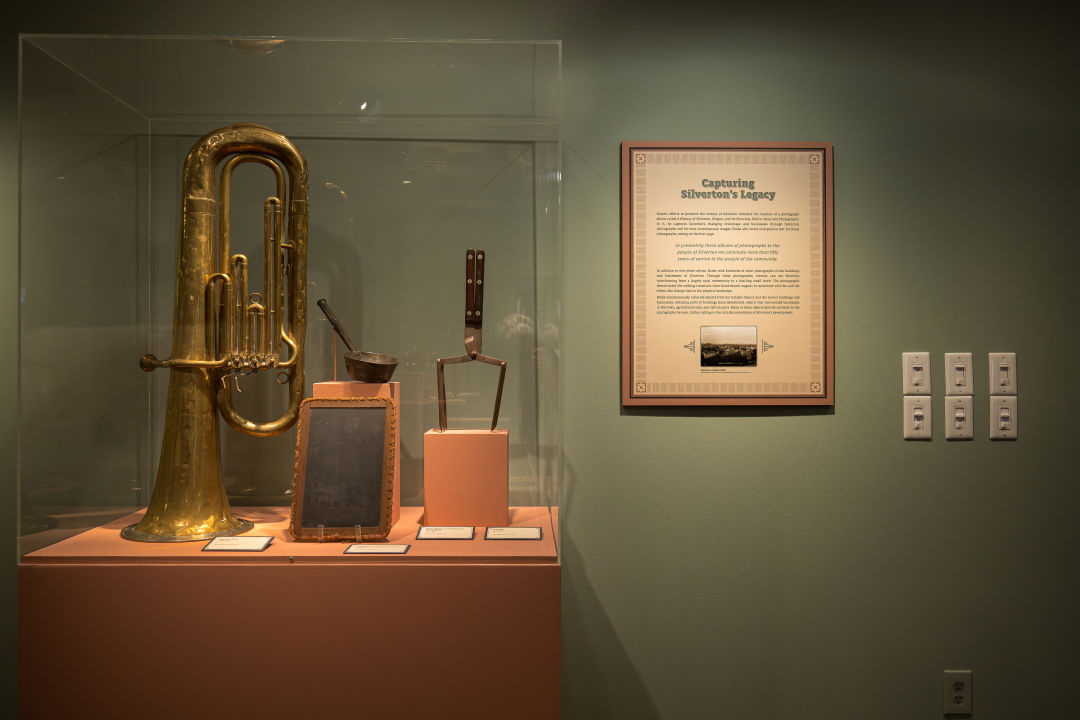Through His Lens: How June Drake Preserved Silverton and Silver Falls

Decades before high-quality digital cameras were tucked in everyone’s back pocket, June D. Drake (1880–1969) was capturing Oregon’s beauty one glass plate at a time. From his studio in Silverton, the self-taught photographer chronicled the rhythms of small-town life — documenting the transformation of a largely rural community to a bustling small town. Over six decades, Drake became both artist and archivist, creating a visual diary of a changing Willamette Valley. A new exhibition at the Oregon Historical Society, June Drake: Preserving the Past to Shape the Future, highlights Drake’s legacy as a community documentarian and curator of public memory.

Drake’s work is perhaps best remembered for its role in protecting one of Oregon’s natural treasures: Silver Falls State Park. Drake spent years photographing the waterfalls — lugging heavy cameras and fragile glass negatives across rugged trails to capture the cascades in luminous detail. Aware of the need for this exceptional landscape to be protected from logging, Drake proposed that the Salem Chamber of Commerce purchase the land around the falls and donate it to the state to develop into a state park. When the park was dedicated in 1933, one of its waterfalls was named Drake Falls, a tribute to the photographer whose advocacy made the park possible.

Drake’s curiosity extended to photographic technology itself. He embraced innovations like the Cirkut Panoramic Camera, which allowed him to capture expansive 360-degree views of landscapes and community gatherings. For a deep dive into these remarkable panoramic images, check out the OHS blog post, “History in 360: Cirkut Panoramas in the June Drake Collection,” which highlights some of his most ambitious works.

Drake’s photographs also documented local stories and characters, including the famed Bobbie the Wonder Dog, a beloved Silverton canine who disappeared on a car trip in Indiana in the 1920s and returned home six months later after journeying an extraordinary 2,800 miles across the country.

Image: Evan Kierstead
Inside the exhibition, Drake’s crisp portraits and panoramic town views are paired with a fascinating selection of objects he collected over his lifetime. In 1959, Drake contracted with the Oregon Historical Society to sell his collection of approximately 2,918 original photographic prints, 3,800 original glass and acetate negatives as well as about 500 historical objects. Ranging from pioneer tools to shop signs to objects from daily life to mementos from demolished buildings, Drake’s collection ensures that a meticulous record of the town — and its people — would endure.

On view through February 8, 2026, June Drake: Preserving the Past to Shape the Future is both a celebration of Drake’s creative eye and a reflection on the role of photography in shaping how we remember place. For visitors, it’s a chance to see Oregon through the lens of someone who understood that beauty and history often exist in the same frame.
The Oregon Historical Society’s museum is open daily in downtown Portland, from 10am to 5pm Monday through Saturday and 12pm to 5pm on Sunday. Admission is free every day for youth 17 and under, OHS members, and residents of Multnomah County.
